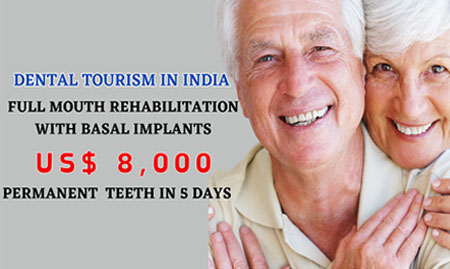
Dr. K Sharada Reddy, Author
Senior Dentist & Full Mouth Rehabilitation Expert
When it comes to permanent teeth in 7 days, patients with severe bone loss, diabetes, or smoking history often face limitations with traditional implant systems. Two techniques commonly discussed are Basal Implants and the revolutionary CPBCCI Protocol (Crestal Polished Bicortical Conventional Implants), developed and perfected at LBR Dental & Implant Center, Hyderabad, India, under the leadership of Dr. K.A. Reddy, also known as the Zygo man of India.
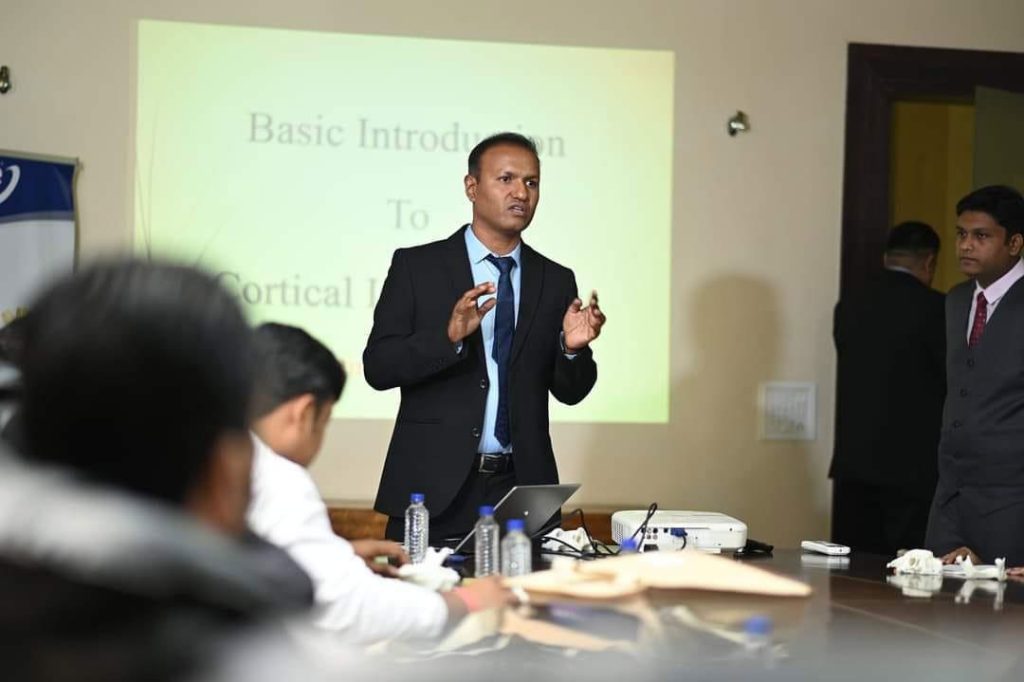
While both techniques aim for Same day dental implants and fixed teeth without bone graft or sinus lift, the CPBCCI Protocol offers significant advantages in long-term success, hygiene, biocompatibility, treatment choice matters. The CPBCCI Protocol (Crestal Polished Bicortical Conventional Implants) pioneered at LBR Dental &Implant Center, Hyderabad by Dr. K.A. Reddy combines two-piece conventional implants with a polished crestal collar and bicortical anchorage to allow immediate loading dental implants(fixed teeth in 5–7 days) without grafts or sinus lifts. Compared with basal implants and with the regular conventional implant workflow (two-stage or graft-based conventional implants), CPBCCI offers advantages in Osseo Integration Osseo integration, infection control, prosthetic flexibility, retrievability, and suitability for medically compromised patients.
One of the most important distinctions lies in the type of implants used. CPBCCI employs FDA-approved Conventional dental implants that are crystally placed and anchored bicortically, providing robust primary stability. These implants are uniquely designed with a polished neck that resists plaque and bacterial accumulation at the gum level, drastically reducing the risk of peri-implantitis, especially in diabetic patients and smokers, where infection control is crucial. In contrast, basal implants are one-piece, not polished at the crestal level, and are placed deep into the basal bone. They do not Osseo Integrate, relying purely on mechanical fixation, often leading to long-term complications.
Furthermore, the roughened body of CPBCCI implants enhances Osseo Integration, enabling them to biologically fuse with the bone, making them a lifelong solution for edentulous patients. An additional level of infection control comes from the mandatory use of multi-unit abutments. These abutments, available in multiple angulations and heights, correct the tilt of implants placed at an angle and provide a second layer of infection resistance by maintaining a few millimeters’ distance between the implant body and the prosthetic interface. This dual protection polished neck plus multi-unit abutments makes the CPBCCI protocol a gold-standard approach for full-mouth dental implants, even in medically compromised patients.
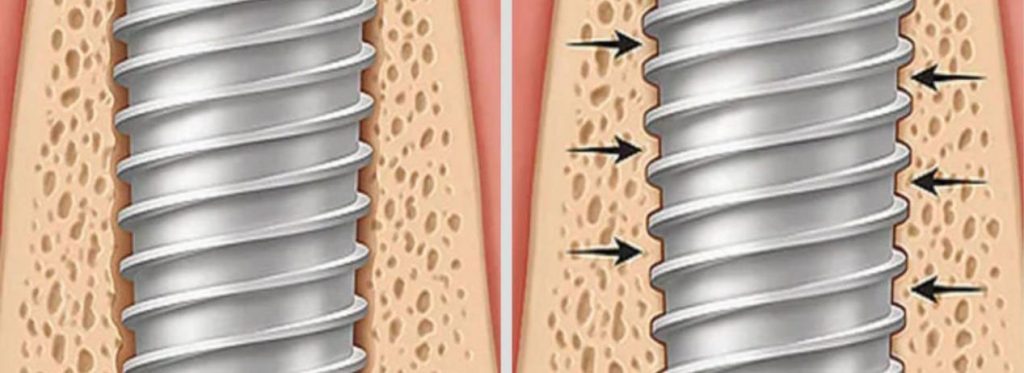
In terms of prosthetics, the CPBCCI protocol supports screw-retained, solid Zirconia prostheses with titanium frames, which are both aesthetic and durable. Basal implants, due to their one-piece design and prosthetic limitations, often use cement-retained prostheses, increasing the risk of cement-related complications and infections. The retrievability of CPBCCI-based implants and prosthetics offers further peace of mind to patients, allowing for easy maintenance or revision, unlike basal systems which require invasive intervention for any correction or failure.
Patients traveling from the USA, Canada, UK, Australia, or the Middle East are increasingly opting for dental tourism in India due to the CPBCCI protocol’s unmatched safety, affordability, precision, and global success rate. With no bone grafts, no sinus lifts, and fixed permanent teeth in just 5–7 days, this approach redefines the standard of care for full-mouth rehabilitation and immediate loading implantology.
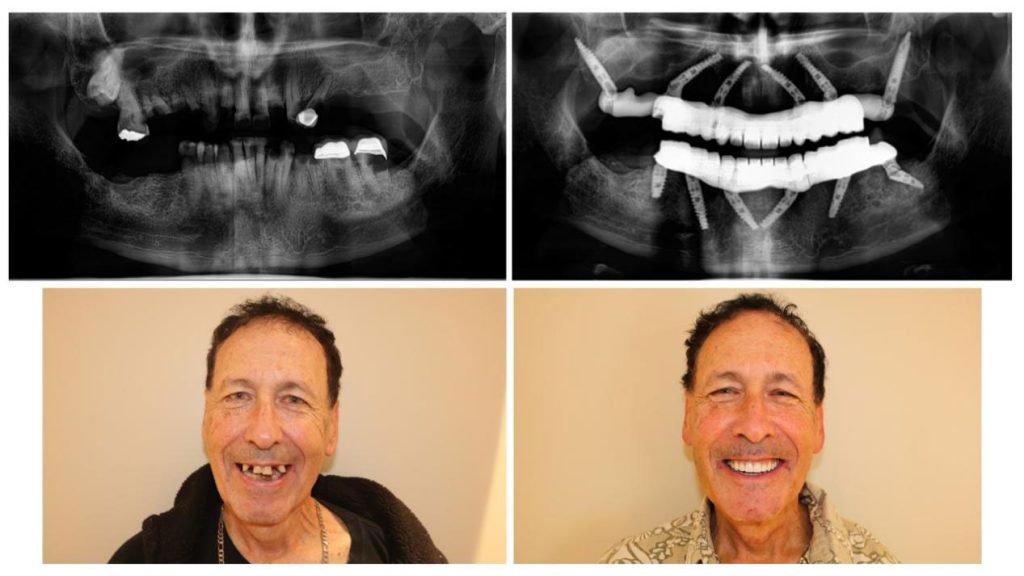
Comparison table of Implants with CPBCCI Protocol vs Basal implants vs Regular Conventional Implant Method
| Feature | CPBCCI Protocol(Conventional implants with polished neck + bicortical anchorage) | Basal Implants(One-piece basal anchorage) | Regular Conventional Implant Method(Traditional two-stage / graft-dependent) |
|---|---|---|---|
| Implant design | Two-piece conventional implants with a polished crestal collar (neck) and bicortical anchorage | One-piece implants (implant + abutment) with design optimized to anchor in basal cortical bone | Two-piece conventional implants (separate implant body and abutment) |
| Need for grafts / sinus lift | Usually no — implants designed for graftless approach by engaging cortical bone | Usually no — basal anchorage avoids grafts | Often yes — when bone volume is insufficient; ridge augmentation or sinus lift frequently required |
| Crestal hygiene & peri-implant infection risk | Lower risk — polished crestal collar resists plaque; multi-unit abutments place prosthetic junction away from bone crest | Higher risk at crestal area — one-piece design often has rougher crestal zone; soft tissue health can be challenging | Depends on execution — if biologic width and cleanable emergence profile are achieved, risk can be low; grafts and multiple surgeries increase risk |
| Prosthetic options & retrievability | High — screw-retained prostheses (solid zirconia on titanium framework) with easy retrievability via multi-unit abutments | Limited — prosthetics often constrained by one-piece design; cement-retained solutions common; retrievability is difficult | High — screw-retained or cemented prostheses possible; two-piece design allows flexibility and retrievability |
| Angulation correction | High — multi-unit abutments correct angulation and allow passive fit of prosthesis | Limited — one-piece design reduces ability to correct angulation prosthetically | High — angled abutments available, though ideal implant placement preferred |
| Long-term maintenance & repairs | Simpler — modular components and retrievability make repairs and hygiene maintenance straightforward | Difficult — one-piece design often requires complex or surgical solutions for prosthetic failures | Moderate — repairs straightforward if restorative design anticipated; grafted sites may complicate revisions |
| Clinical disadvantages / risks | Requires surgical skill for bicortical anchorage and prosthetic planning; high-quality components cost more; immediate loading depends on strict protocol | Can have higher long-term biological complications at crest; limited prosthetic versatility; may have higher maintenance issues | Longer treatment time when grafting required; more surgeries, higher patient morbidity and cost; delayed function in many cases |
| Best suited for | Patients needing immediate fixed teeth without grafts, including medically compromised (e.g., diabetics, smokers) when strict protocols are used | Patients needing immediate anchorage in cortical bone where crestal bone is extremely compromised, but with prosthetic trade-offs | Patients with adequate bone for standard implants or willing to undergo grafting/sinus lift; ideal for long-term stepwise rehabilitation |
| Regulatory / acceptance notes | Uses conventional two-piece implants that, depending on brand, have standard regulatory approvals | Designs vary — one-piece basal systems less widely adopted in mainstream; evidence varies by system | Gold standard in many settings; extensive long-term evidence for two-stage conventional implants when biologic and surgical conditions are ideal |
Design notes & disadvantages
CPBCCI (Conventional implants used in CPBCCI)
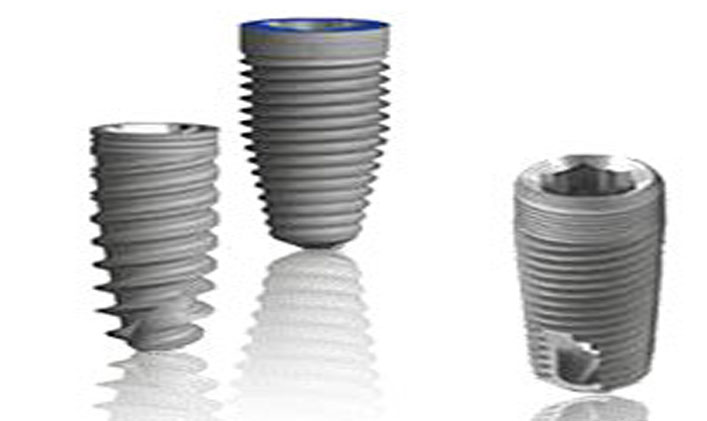
Design: two-piece implants with a polished crestal collar + roughened body for Osseo Integration; multi-unit abutments to move the prosthetic junction away from bone.
Advantages: biologic Osseo Integration, polished collar reduces plaque at the neck, multi-unit abutments increase prosthetic flexibility and infection resistance, retrievable restorations.
Disadvantages: requires meticulous surgical planning and skill to achieve bi cortical engagement; immediate loading protocols must be strictly followed.
Basal implants
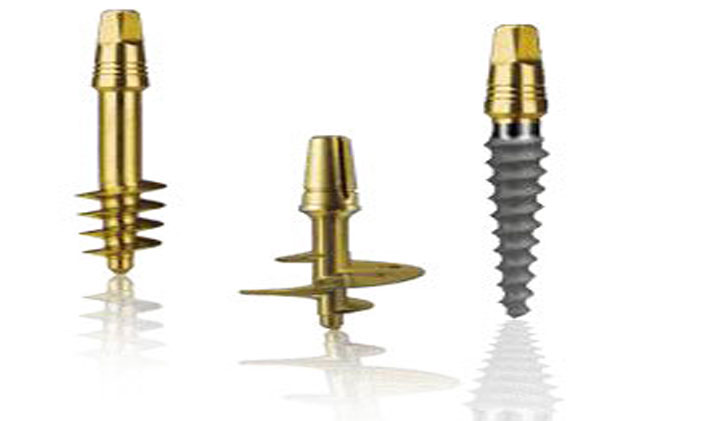
Design: one-piece implants engineered to anchor into basal cortical bone; generally lack a separate multi-unit interface.
Advantages: immediate mechanical stability, graft less approach in severe atrophy.
Disadvantages: limited prosthetic options, often cement-retained restorations, challenging retrievability, crestal soft tissue can be vulnerable to plaque leading to biological complications over time; long term comparative evidence and regulatory acceptance for some basal systems is less consistent.
Regular conventional implant method (traditional two-stage or graft- dependent)
Design: two-piece implants placed crystally; often combined with bone grafting/sinus lifts when bone is insufficient.
Advantages: strong evidence base for Osseo Integration and long-term success in suitable cases; excellent prosthetic flexibility.
Disadvantages: longer treatment time (months), multiple surgeries, higher morbidity and cost when grafting required; not ideal for medically compromised patients unwilling to undergo grafting or long delays.
Conclusion
For full-mouth rehabilitation in challenging clinical situations (severe atrophy, diabetes, smokers, or patients seeking fast, graft less solutions), the CPBCCI Protocol offers a powerful middle ground: it keeps the biologic advantages of conventional implants (Osseo Integration, retrievability, prosthetic versatility) while enabling immediate loading through bicortical anchorage and minimizing crestal infection risk via ab polished collar and multi-unit abutments. Compared to basal implants, CPBCCI improves prosthetic flexibility and long-term biological outcomes; compared to regular graft-dependent conventional protocols, CPBCCI avoids grafting and shortens treatment time for appropriate cases at the cost of requiring high surgical and prosthetic expertise.
Frequently Asked Questions (FAQs)
The CPBCCI (Crestal Polished Bicortical Conventional Implant)
protocol is a modern graft less dental implant technique using two-piece Conventional dental implants with a polished neck and bi-cortical anchorage. It allows permanent teeth in 7 days, even in patients with severe jaw bone loss and also implants for diabetic patients.
Unlike basal implants, which are one-piece dental implants and rely only on mechanical anchorage, CPBCCI uses biologically integrating implants, ensuring Osseo Integration, immediate loading, long-term success, retrievability, and better infection control through multi-unit abutments and a polished collar.
Yes. The polished neck collar of the CPBCCI implants prevents bacterial accumulation, reducing infection risk and delivers Immediate loading implants without bone graft. Combined with multi-unit abutments, it creates a dual-level defense against peri-implantitis and implant failure, making it ideal for diabetic patients and smokers.
Absolutely. The CPBCCI protocol enables immediate function implants and delivers screw-retained zirconia prosthesis within 5–7 days, making it the perfect solution for international patients seeking dental tourism in India.
The CPBCCI Protocol uses FDA-approved dental implants with a special design that, when placed correctly by an experienced
implantologist, typically require no replacement or revision in the future. In contrast, basal implants rely solely on mechanical engagement with the bone, without true OsseoIntegration, and often necessitate complex surgical removal if dental implant complications or dental implant failures occur."
Yes. Patients from the USA, UK, Canada, and Australia can receive affordable fixed teeth implants in less than a week save up to 70%ontreatment costs when choosing LBR Dental & Implant Center, Hyderabad, our center offers budget friendly dental implants without compromising on quality, safety, or outcomes.
Both use conventional, two-piece implant hardware that OsseoIntegrate. The difference is in how they are placed and finished: CPBCCI intentionally uses a polished crestal neck and bicortical anchorage combined with multi-unit abutments to allow immediate loading implants for severe bone loss without grafts and to reduce crestal plaque accumulation. The regular conventional method often follows a crestal placement and when bone is insufficient will use grafts or sinus lifts and may delay loading until OsseoIntegration completes.
A polished crestal collar resists plaque retention and helps maintain healthier soft tissue at the bone crest. That reduces risk of peri implant mucositis/ peri-implantitis particularly important in diabetics and smokers.
Yes, CPBCCI uses implants designed for Osseo integration. Durability depends on surgical technique, prosthetic design, and maintenance. CPBCCI’s retrievability and screw-retained prostheses also makes repairs simpler.
Basal implants often provide high primary mechanical stability and can be loaded immediately but they trade off long term implant retention due to lack of proper osseointegration of the implant body with the bone, prosthetic flexibility and can be harder to manage long term if biological/infective problems arise at the crest.
Patients seeking immediate fixed teeth without bone grafts, including those with severe ridge atrophy who still have cortical bone for bicortical engagement, and many medically compromised patients like diabetics or individuals who smoke are good candidates for full mouth implants with CPBCCI Protocol.
Requires precise surgical skill and prosthetic planning. Immediate loading brings higher technical demands, experience and expertise.
- CPBCCI: maintenance tends to be simpler due to retrievability and polished collar.
- Basal: maintenance can be more complex due to one-piece design and risk of crestal inflammation.
- Regular conventional (graft cases): maintenance is routine but grafted sites are most of the times invasive, delay treatment by several months and may complicate revisions.
CPBCCI favors screw-retained prostheses (solid zirconia on titanium frames) for retrievability and to avoid cement-related complications.
CPBCCI reduces crestal plaque and shifts the prosthetic junction away from bone (multi-unit abutments), both of which help lower infection risk making it a favorable option for controlled diabetics and smokers compared with designs that leave a rough crestal surface or cemented prosthetics.
CPBCCI uses conventional dental implant systems that are FDA approved, with a special design which favors immediate loading and safe in diabetics and individuals who smoke
Yes, because the system is conventional and screw-retained, components can be removed and revised; prostheses are retrievable, making correction and repair of the prosthesis far easier than with one-piece basal systems.
Many international patients report substantial savings up to 70%, actual
savings vary by treatment complexity, chosen prosthetic materials, and travel logistics.

